So, are you sure you know everything that comes under SEO?
Get ready to dive into the sea of SEO and get familiar with the most popular and powerful SEO terms in our glossary.
We have come up with a Glossary-Cum-Quiz to help you test your knowledge of SEO. Take the challenge and find out where you stand in the world of Search Engine Optimization.
Here’s the Score Board…
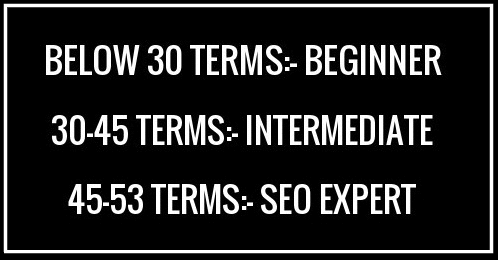
GET! SET! GO!
1. DNS Prefetch
Using rel=dns-prefetch is a technique of pre-resolving DNS to speed up the web pages. It recommends a browser to resolve the DNS of a domain before calling it explicitly.
2. Silo Structures
It means to organize the website content in a way that is easily understandable for users as well for search engines. It may be called as an inverted tree structure or a pyramid in which the entire content is classified into multiple sub categories with a top level category. All the sub categories are named according to the content in it to avoid any content clutter.
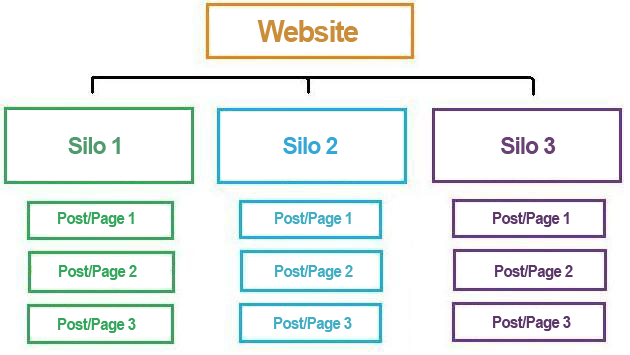
3. Hashbang
Hashbang is a boon for AJAX based sites as search engines are unable to index these websites. Hashbang ( #!) is a number sign followed by an exclamation which helps Google bot in reading and recognizing the URLs.
4. ROAS
Return on Advertising Spending (ROAS) is a Key Performance Indicator (KPI) used by marketers to calculate media effectiveness. You can determine it for both offline and online media campaigns. It can be further stressed on other campaign elements, for example, Google AdWords Ad Groups, discrete keywords within PPC advertising, etc. To calculate ROAS, you need to divide total revenue generated from ad source by the total cost incurred in the ad source. <1 value implies a low revenue generated compared to the cost spent on advertising.
5. AMP
Accelerated Mobile Pages (AMP) is an open standard project designed for publishers to make page loading quicker on mobile devices. Its aim is to design webpages that can load fast. This Google-backed project has 3 main components – AMP HTML, AMP JS, and Google AMP Cache.
6. Scrape
Scraping refers to the practice of copying content from another site. It is generally followed by the automated bots.
7. RankBrain
Released in October 2015, RankBrain is the part of Hummingbird and an artificial intelligence program that is used as a way to intelligently interpret the relevant pages for the queries asked by the people that don’t have the exact words.
8. Disavow
Disavow is a medium to let webmasters inform Google that they don’t want specific links coming from external websites to be counted when ranking the site.
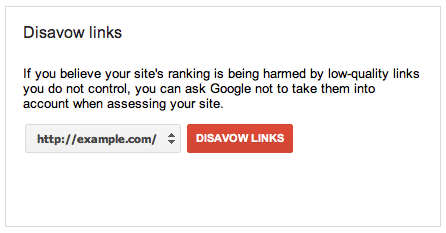
9. Dwell Time
It’s the metric responsible for calculating different parameters like user engagement, duration of the session, as well as SERPs CTRs. It works as a data point (not publicly available or understandable) but still influences the search engine results of a site.
10. Favicon
It is a unique icon related to a specific site, visible on the address bar of a browser or next to the website’s name in the bookmarks list.
11. Breadcrumbs
Breadcrumbs are the links that tell users their location on the site. It is visible at the top of the page and reflects the structure of the page.

12. Doorway Pages
These are the low-quality web pages that act as a door between user and content. They are generally created to spam the specific search results by sending visitors to a different website. These offer less value to the visitors.
13. Google Bomb
It is a black hat SEO technique to increase a webpage’s rank by exploiting the Google algorithm. It involves artificially increasing the number of pages that link to a page by using the main keywords as the link’s anchor text.
14. Affiliate
In SEO, affiliate sites implies to those who promote services/products of an online merchant website. These affiliate websites post links to the merchant site and are paid according to the pre-decided commission.
15. Google Adwords
Google Adwords is an advertising program for the businesses that want to show ads on Google and its respective advertising network. Businesses set keywords and budget for the campaign and only pay when people click the ads.
16. 301 Redirect
Redirection is when you visit a particular page, but it automatically redirects you to another page, which has a different URL than the one you clicked. 301 redirection is a permanent redirection which passes the link juice to the redirected page. 301 is the HTTP status code for this type of redirect.
17. Social Bookmarking
It is a common SEO practice to create quality backlinks in the eyes of search engines to ultimately improve the ranking of keywords. Popular social bookmarking sites are: Delicious, Digg, and StumbleUpon.
18. ALT Tag
ALT tag is an HTML attribute of IMG tag. Like an IMG tag helps in showing images, ALT tag comes handy when it is unable to load. The ALT tag displays the text and thus, help inform search engines about your images.
19. Anchor Text
It is the display text of a link to a web page or site. When you enter text (web URL) it turns blue and becomes clickable. Anchor text defines what the hidden link is about and what you may see after clicking on it.
20. Black Hat SEO
This one may seem familiar, yet you might not know the exact meaning. Black hat SEO includes all the spammy, manipulative, and unethical SEO techniques which are followed against the rules as mentioned by Google. Using black hat SEO tactics may get your site in trouble and it may end up being banned or penalized by the search engines.
21. Deep Linking
Deep linking, is the practice of creating a hyperlink within the content to direct the traffic beyond homepage and other entry pages. This technique reduces bounce rate and improves conversion.
22. Google Analytics
Google Analytics is a software program which helps in collecting and analyzing information or data about a site’s usage. It is a free tool that let us know how the traffic interacts with the website.
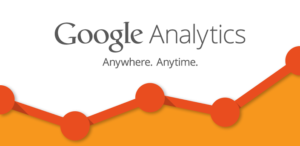
23. Authority Site
An authority site is one which has multiple links coming from other related hub or popular sites. These tend to enjoy a considerably higher PageRank and ranking in search engines. For example, Wikipedia is a great authority site.
24. Canonical URL
It is an HTML element that prevents duplicate content by mentioning the “canonical” or “preferred” version of a web page as a part of SEO. There might be more than one page pointing to the same information or containing it.
25. Cloaking
When a website shows different content to users and to search engines, it is called Cloaking. It is a way to manipulate search engines spiders to achieve ranking for specific keywords but providing users with irrelevant content. This can be done by delivering content based on the User-Agent HTTP header or IP addresses of the user.
26. Do Follow Link
Dofollow links are standard HTML links without rel=”nofollow” attribute. These links allow crawlers to follow the link and pass the link juice.
27. No Follow Link
Nofollow is a value added to the rel attribute of an HTML to tell crawlers that a hyperlink is not allowed to affect the link target’s ranking.
28.Domain Name
A domain name is the unique string of the web address which is responsible for identification.
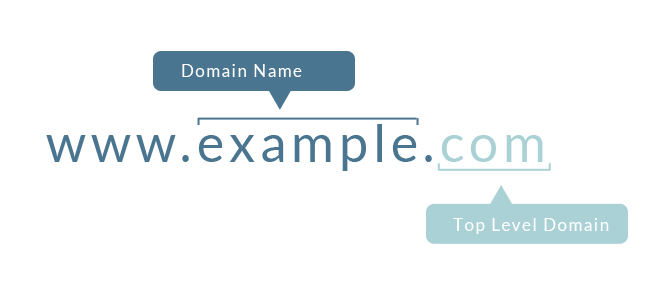
29. Web Hosting
Web Hosting is the practice of offering websites storage space and access. It is generally paid and provided in different packages. Popular web hosting services are HostGator, GoDaddy and Bluehost.
30. Panda
It is tweaked in Google’s algorithm for search results ranking, which was initially released in Feb, 2011. Panda was meant to reduce the low quality or spammy sites, especially content farms and meanwhile rank the high-quality websites in the top searches.
31. Penguin
In April 2012, Google Penguin was launched to detect the spammy sites, in particular, those who are ranking high in SERPs through buying links or powerful link networks to improve Google Ranking.
32. Pigeon
Given the codename of Pigeon, it is the update to Google’s local search algorithm, released on July 24, 2014. It is meant to improve the local listing rankings in searches. The changes influence the search results in Google Maps as well as usual search results.
33. Hummingbird
Google’s Hummingbird is a search algo utilized by the search giant itself. It analyzes every word in a query and makes sure that the complete query is taken into consideration.
34. Keyword Density
It is the percentage of the number of times a specific keyword or keyphrase is used on a web page as compared to the overall word count on the same page. As per SEO, keyword density can be utilized in order to find out if a web page is genuine to the considered keyword or keyphrase.
35. Keyword Stuffing
It refers to adding too many keywords on a web page with the motive of manipulating the search engines to rank it for that specific keyword. Generally, these keywords do not make natural sense with the entire text on the page.
36. Duplicate Content
It is the content on the same or other domains which matches partially or completely.
37. Bot
Also referred as web robots, a bot is an automated software application designed to run automated scripts and tasks across the Internet. In general, bots perform the same task much speedily and with higher accuracy as compared with a human.
38. Bounce Rate
It is the total percentage of visitors on a specific site who come to your website and go away after visiting only one page of the entire site. For example, if the bounce rate is 75%, this means 75% of the total people who come to your site, leave without viewing any other page.
39. SMM (Social Media Marketing)
It is a form of internet marketing that uses Social Media as a marketing tool. Its aim is to produce quality content that users will share in their network which will ultimately increase the brand exposure and leads.
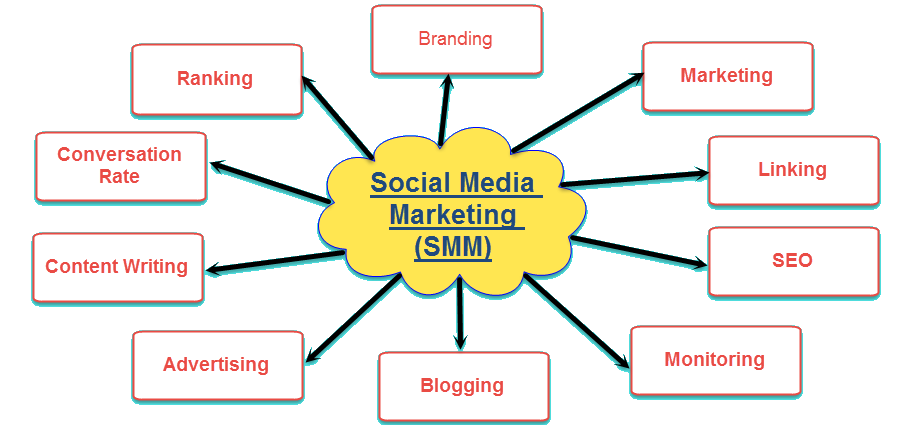
40. ROI
ROI is the percentage used to express the ratio of net profit to the total cost of investment divisible by 100. In short, if your revenue is greater than your spend, then you are getting return of your investment.
41. Conversion Rate
The conversion rate is the average number of total conversions per ad click. It is shown in the form of percentage and calculated by dividing the two.
42. Cost Per Click (CPC)
Also referred as Pay Per Click (PPC), CPC is an internet advertising model which is utilized to drive traffic to websites. Here a publisher is paid by an advertiser for every ad clicked.
43. CPM
CPM (Cost per Mille) in marketing, is used to denote the cost of 1,000 ad impressions on a single web page. The M in CPM is for the Roman numeral that denotes 1,000.
44. LSI Keywords
LSI keywords are those keywords which are semantically related to the main keyword. Contradictory to what people generally believe, LSI keywords play an important role in ranking the main keyword or text in search results.
45. XML Sitemap
A Sitemap refers to an XML file containing complete URLs of a website. It lets webmasters to add extra info regarding each URL in particular, including the last time it was updated, the frequency of changes, as well as its connection with other pages on the website. XML sitemap generally enables search engines to index the websites better so it should be easily discoverable.
46. Indexing
Indexing is the process of adding webpages into the Google Search. The bot gathers, parses and stores the data on whatever is on the Internet to show quick and relevant information in searches.
47. Inbound Link
These are the links to other sites or pages that point to the webpage of your website.
48. Mirror Site
Mirror site is a duplicate (or replica) of an already existing site. This is done to cut down the excessive traffic that may generate a load on server or in order to enhance the speed of the existing website. Using it to target different keywords for duplicate content violates the terms of Search Engines.
49. Google Dance
The outdated term refers to the time which Google use to restore its ranking. This is the result of this rebuilding practice that there are sometimes fluctuations in the rankings of other sites on Google SERPs.
50. Link Juice
It is an SEO term which refers to passing of SEO value from one webpage to the other through a hyperlink.
51. Crawling
Crawling is described as the process using which Search Engine bots visits a site or web page to track it. The Search Engines send out their spiders to discover the websites that contain the most relevant information.
52. Broken Link or Dead Link
It is a non-working link on a web page. Higher the number of dead or broken links on a page worse it is for the site.
53. FTP
File Transfer Protocol is the protocol used for transferring data or files from a computer to a website (or vice versa).
These were some of the not-so-common and a few familiar SEO terms shortlisted for you. So are you a beginner or an outstanding SEO expert? Share your score with us and let us know what you liked about the post in comments below.
